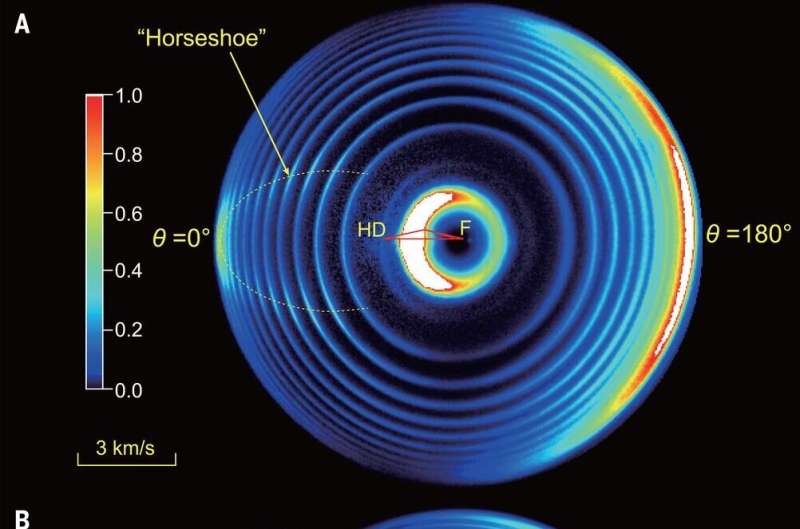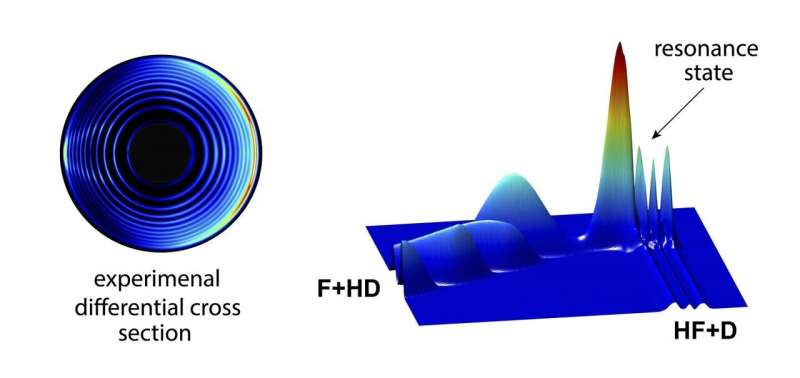The D-atom product from the F + HD → HF + D reaction at a collision energy of 2.10 kcal/mol. (A) Experimental results; (B) theoretical results. The crossing angle of the two beams is 160°. θ = 0° and 180° denote the forward- and the backward-scattering direction, respectively, for the HF coproduct in the center-of-mass frame relative to the F-atom beam direction. A peculiar horseshoe-like feature in the forward-scattering direction can be clearly seen in the scattering pattern. Credit: Science (2021). DOI: 10.1126/science.abf4205
A team of researchers from the University of Science and Technology of China, the Chinese Academy of Sciences and the Southern University of Science and Technology, has discovered a thought-provoking pattern in cross-sections observed in an F + HD → HF + D reaction. In their paper published in the journal Science, the group describes their double-pronged approach to learning more about the role of relativistic spin-orbit interactions in chemical reactions. T. Peter Rakitzis, with the University of Crete, and IESL-FORTH, has published a Perspectives piece in the same journal issue outlining the difficulty of studying chemical reactions at the quantum level and the work done by the team in China.
Studying chemical reactions as they occur at the quantum level is difficult work—not only are there multiple things happening almost all at once, but most interesting reactions happen in a very short amount of time. In this new effort, the researchers sought to overcome such problems and to learn more about what happens during just one kind of reaction: the F + HD → HF + D reaction. To that end, they carried out a two-pronged approach to capture what happens as reactants scatter due to quantum effects.
The first part of their experiment involved using a high-quality velocity-map-imaging, crossed-beams technique to learn more about partial wave resonances. The second part involved creating simulations based on theories about what should happen in such reactions. As the researchers note, during a collision condition, a molecular-crossed-beam device can detect the scattering angle-resolved product with rotational-state resolution.
Using the data from the device and from the simulations together (which included electronic angular momentum effects) allowed the team to observe the electronic angular momentum effect during a chemical reaction. It also allowed the researchers to observe an interesting horseshoe-shaped pattern in cross-sections of the reaction as it was taking place—in the direction of scattering. The theoretical part of their experiment suggested that the unique pattern design is due to quantum interference that occurred between the positive and negative spin-orbit divide and semi-wave resonances. The researchers suggest that their results provide an example of spin-orbital interactions influencing the dynamics of a reaction.
The left circles are the experimental measurement of the product state-resolved differential cross sections of the F+HD reaction, the right image is the related partial-wave resonance wavefunction of the reaction. Credit: DICP
More information: Wentao Chen et al. Quantum interference between spin-orbit split partial waves in the F + HD → HF + D reaction, Science (2021). DOI: 10.1126/science.abf4205
Journal information: Science
© 2021 Science X Network

























